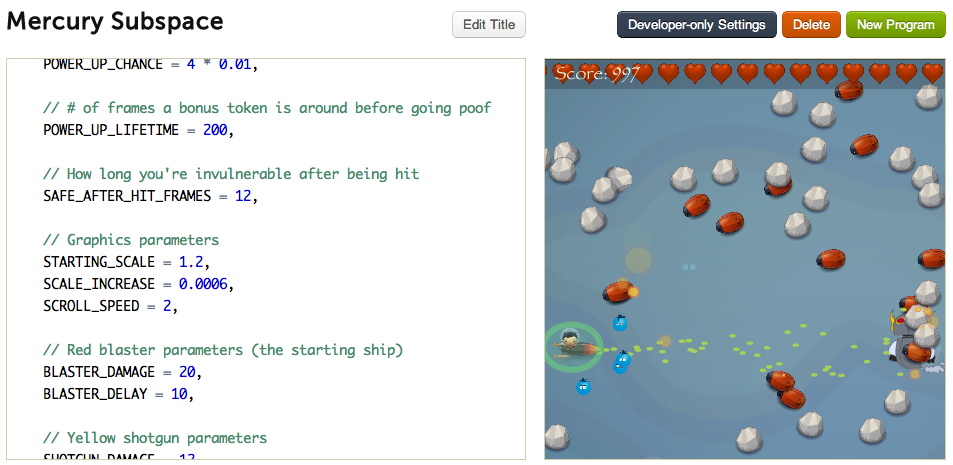
At Khan Academy, we recently launched our inaugural computer science experience. We are pretty excited, and worked hard for the past 10 months to do something innovative. John Resig, who led the project for us, knows a thing or two about thinking out of the box to
tackle hard problems.
If you ask some programmers what first excited them about computer science, chances are they will describe that sense of joy when they first started creating things. It's that feeling you get when you successfully build something that didn't exist anywhere except in your mind. Sculptors, writers, painters, composers are all intimately familiar with it. It's, well, the act of being creative.
Somehow this notion that STEM fields are actually intensely creative is often lost in our formal educational experience. As students are forced forward in a standardized pace to prepare for the next standardized exam, they rarely have the time to explore, create, and flex their imagination. As we were building the CS platform, we felt that creating an outlet for our users' natural creativity was not only important, but it needed to be the lynch-pin of the educational experience.
So we built a highly artistic software development interface. From hour 1, the user is creating works of art. The feedback is instantaneous, and users can save and share their creations with their friends. Users are encouraged to make something they are proud of, like this impressive game one of our interns created.
Of course, embracing creativity is not only important in computer science, it is important in all domains. One of the core principles behind Khan Academy has been that we need to make the most of our precious classroom time -- and create shared experiences that truly encourage creativity, problem-solving, leadership, and teamwork. By providing students with the online resources they need whenever they need it and arming teachers with real-time data, we can empower teachers to create more enriching shared experiences in the physical environment.
However, finding great activities that embrace students' creativity is not exactly easy. A huge number of available project-based learning resources are of the "paint-by-numbers" variety. Follow these 10 steps to complete the project. They may be nice change-ups for the classroom, but they don't exactly allow much creativity.
We've always thought Khan Academy is about much more than just online videos or learning. We think it is important to promote rich, holistic educational experiences in conjunction with the physical environment. So this past summer we held our 3rd summer camp, the Khan Academy Discovery Lab, a hands-on program for middle school students. We experimented with numerous projects and activities that could engage students at a deeper level.
Beyond it being a ton of fun for us, it reinforced our belief that young kids are capable of tremendous things when you truly unleash their creativity. When we gave them two days for their final project, they completely blew us away. They each built amazing works -- fancy computer animations, complex mathematical shapes and polyhedra, impressive autonomous robots.
If we really want to build the leaders for tomorrow, we need to find a way to promote more of these types of activities that encourage students to keep thinking out of the box and use their imagination. The leaders of tomorrow need to be equipped with the fundamental skills to solve problems never seen before.
